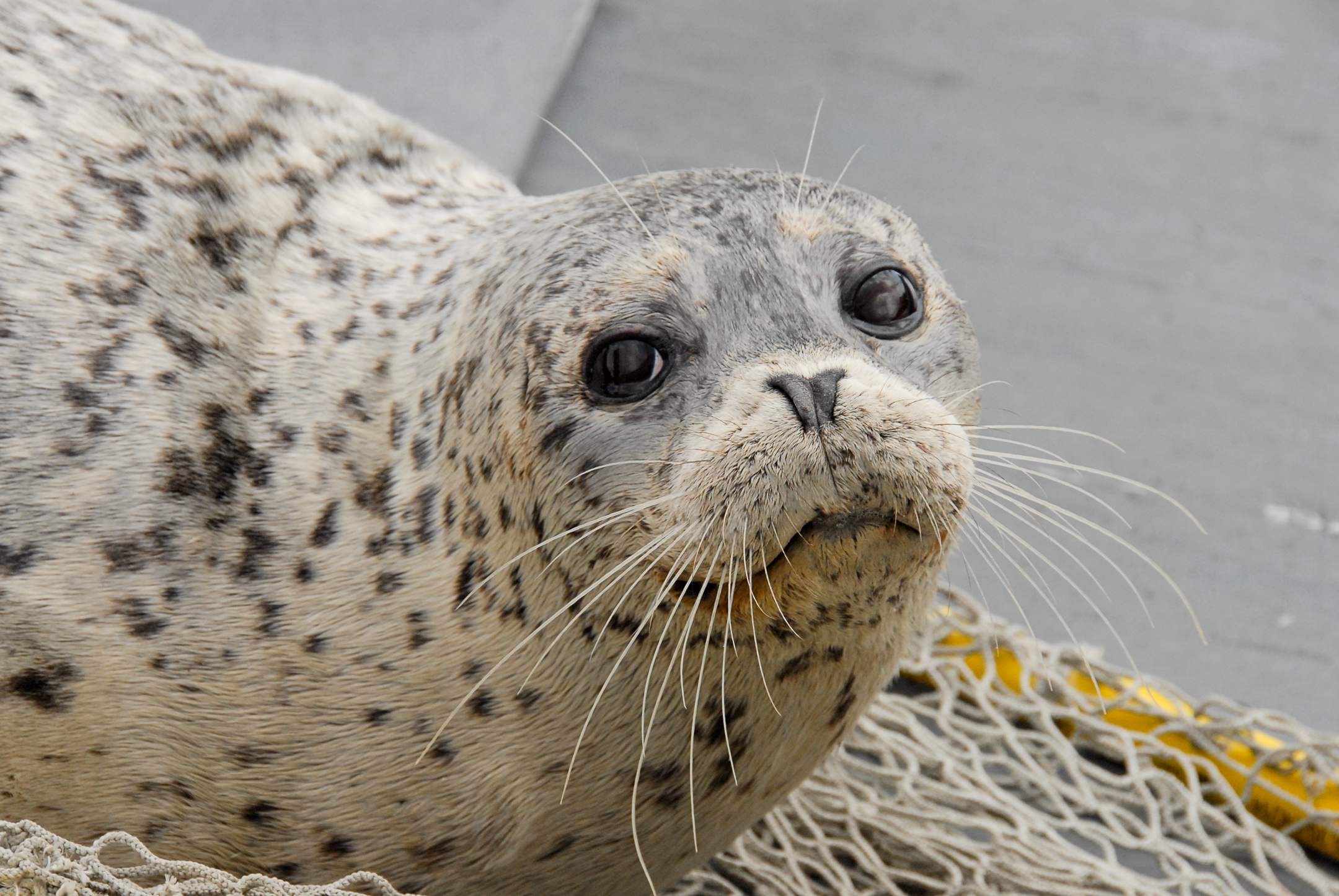Habitat
Phoca vitulina is a species with immense range: speckling the coasts of the world. The subspecies are defined by where, geographically, they reside. By indicating the location of the various populations, you are inadvertently discussing the five subspecies which make up P. vitulina (SeaWorld, 2005). There are also slight physical differences which distinguish the subspecies. This is due to isolation from one another over time (Annalisa & Churchill, 2012). The subspecies, their geographic proximity, and their morphological differences are described below.
Pacific Seals
Phoca vitulina richardsi
This particular subspecies spreads through the northeastern Pacific,
specifically off the coast of California to parts of Alaska and
including the coast of Mexico (SeaWorld, 2005). Populations of
P. v. richardsi have a small skull with a light coat color
(Annalisa & Churchill, 2012).
Phoca vitulina stejnegeri
P. v. stejnegeri is found throughout the northwestern
Pacific, which includes the Bering Sea and even to Hokaido, Japan (SeaWorld, 2005). P. v. stejnegeri has a
larger head and body than the other forms. They also have a slightly
(almost unnoticeable)
darker coat color than P.v. richardsi. P.v. stejnegeri
and P.v. richardsi are so similar in appearance that they
are even considered the same subspecies at times! (Annalisa & Churchill, 2012).
Atlantic Seals
Phoca vitulina vitulina
P.v. vitulina has populations scattered through the eastern
Atlantic along Europe, Finland, Portugal, and Iceland (SeaWorld,
2005). There are no notable physical characteristics which vary between
P.v. vitulina and P.v. concolor, and due to this
P.v concolor is not considered a separate subspecies to some
groups. Instead they are grouped with P.v. vitulina
(Annalisa & Churchill, 2012).
Phoca vitulina concolor
P.v. concolor is located between Greenland and the center of
the coast of Canada (the western Atlantic) (SeaWorld, 2005). See
Phoca vitulina vitulina for morphology.
Freshwater Seals
Phoca vitulina mellonae
P.v. mellonae is found only in the Seal Lakes
(located in Canada) (SeaWorld, 2005). This form of harbor seal is the only
freshwater pinniped out of the five subspecies. It can be recognized
through its dark coat and jaw region (Annalisa &
Churchill, 2012).
Worldwide geographic distribution of the harbor seal, Phoca vitulina. Image credit to Jonathan Hornung.
Phoca vitulina do not restrict themselves to the coastline though; they typically embark from this safe haven in order to mate and forage (Stanley et al., 1996). Foraging proves to be the most dangerous task the seals undergo. Killer whales, sharks (such as the great white shark), sea lions, and walruses are all potential predators lurking in deeper waters (SeaWorld, 2005). Harbor seals can travel immense distances to mate and forage, but rarely do the different subspecies meet. This results in speciation- the process of one species (or in this case subspecies) becoming two genetically different species- which emerging evidence shows is occurring between the subspecies (Stanely et al., 1996). Complete speciation has yet to occur due to the fact that the subspecies can still produce viable offspring together, but the variations in mitochondrial DNA are telling, leading to this idea of speciation (Stanely et al., 1996).

_world_rad.png)